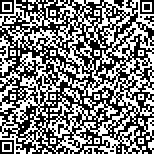| 本文已被:浏览 1730次 下载 1657次 |

码上扫一扫! |
| 晕船适应与不适应大鼠脑干蛋白质双向电泳图谱的比较与鉴定 |
| 苏波,张建鹏,冯伟华,杜鹏,任绪义,郭俊生,SUBo,ZHANGJian-peng,FENGWei-hua,DUPeng,RENXu-yi,GUOJun-sheng |
|
|
| () |
|
| 摘要: |
| 目的:建立晕船适应及不适应大鼠脑干总蛋白质的双向电泳图谱,鉴定差异表达蛋白,探讨晕船适应的可能机制.方法:30只大鼠根据模拟晕船刺激后异嗜高岭土量的增减分为不晕组(n=10)、晕船适应组(n=12)和不适应组(n=8),另设未接受模拟晕船刺激的正常大鼠作为空白对照组(n=10).应用双向电泳技术,分离晕船适应组和不适应组大鼠脑干蛋白(n=6),肽指纹图谱鉴定两组间差异表达蛋白质.结果:模拟晕船刺激21 d后,与空白对照组相比,晕船适应组大鼠异嗜高岭土量经历了一个由少到多又逐渐回落的过程,不适应组大鼠异嗜高岭土量则始终维持在一个较高的水平(P<0.01或P<0.05).获得了9个晕船适应相关蛋白质:硫氧还蛋白过氧化物酶Ⅰ、硫氧还蛋白过氧化物酶Ⅱ、低分子量神经丝蛋白、泛素羧基末端水解酶PGP9.5和谷氨酰胺合成酶上调;碳酸酐酶Ⅱ、磷酸丙糖异构酶Ⅰ、磷酸甘油酸变位酶B和线粒体电压依赖型阴离子通道下调.结论:大鼠对晕船适应后可诱导脑干蛋白质组表达的改变,主要与能量代谢、神经递质调节和氧化应激有关. |
| 关键词: 晕动病、脑干、蛋白质组、双向电泳 |
| DOI:10.3724/SP.J.1008.2006.00382 |
|
| 基金项目:军事医学专项基金(2001J-4). |
|
| Two-dimensional electrophoresis in proteomic comparison and identification of brain stem proteins in seasickness adaptive and non-adaptive rats |
| 苏波,张建鹏,冯伟华,杜鹏,任绪义,郭俊生,SU Bo,ZHANG Jian-peng,FENG Wei-hua,DU Peng,REN Xu-yi,GUO Jun-sheng |
| () |
| Abstract: |
| Objective:To establish a two-dimensional eletrophoresis system for total brain stem proteins of seasickness adaptive and non-adaptive rats and to identify the differentially expressed proteins for investigation of the possible mechanism of seasickness adaptation. Methods: According to the kaolin intakes after seasickness stimulation, 30 rats were divided into nonseasickness group (n= 10),seasickness adaptive group (n=12) and seasickness non-adaptive group (n=8). Another 10 normal rats not receiving stimulation were taken as blank control. The brain stem proteins of seasickness adaptive and seasickness nonadaptive rats (n= 6) were isolated by two-dimensional electrophoresis; the differentially expressed proteins were identified by peptide mass fingerprint (PMF). Results: During a 21-day stimulation, the amount of kaolin consumption in seasickness adaptive rats experienced an increasing phase and a subsequent decreasing phase; seasickness non-adaptive rats consumed significantly more kaolin during the whole 21-day stimulation than the blank control rats did (P〈0.01 or P〈0.05). Nine seasickness adaptive proteins were identified by PMF: peroxiredoxin Ⅰ , peroxiredoxin Ⅱ,light molecular-weight neurofilament, ubiquitin carboxyl-terminal hydrolase PGPg. 5, and glutamine synthetase were highly expressed ; carbonic anhydrase Ⅱ , triosephosphate isomerase Ⅰ , phosphoglycerate mutase isozyme B and mitochondrial voltage dependent anion channel were lowly expressed. Conclusion: Adaptation to seasickness can induce changes in the protein expression pattern of brain stem in the seasickness adaptive rats, which may be associated with energy metabolism, neurotransmitter adjustment and oxidative stress. |
| Key words: seasickness brain stem proteome two-dimensional electrophoresis |
.jpg)
.jpg)